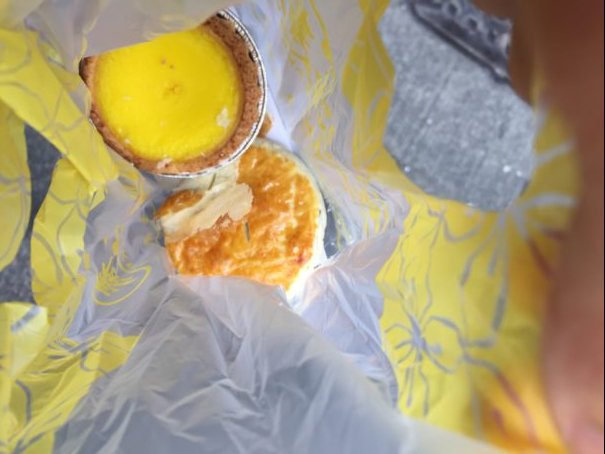
Everyone Benefits When Cultures Mix But Especially the Baked Goods

Everyone Benefits When Cultures Mix But Especially the Baked Goods
Egg tarts in Hong Kong
Jet lag woke me early on my first free day in Hong Kong. Unable to sleep, I turned my thoughts to breakfast. I knew exactly what I wanted—a Chinese bakery.
Chinese baked goods were a rare treat for me growing up in the American Midwest. When my parents made the two-hour drive to Chicago’s Chinatown to stock up on Asian groceries, the highlight was always a stop at a bakery. I would hover over the array of creations, Western staples transfigured by uninhibited Asian creativity. On visits to Taipei, my grandparents would have fluffy milk bread and scallion buns ready for breakfast every day.
Hong Kong had plenty of Chinese bakeries to feed my nostalgia. I looked one up and set off from my hotel. Though it was barely 7 a.m. on Saturday, people were already out and about. I passed elderly tai chi practitioners in the plazas, bar girls sharing a smoke with hungover expats, students buying sticky rice from a corner stall.
The blue dotted path on Google Maps led me to a bakery window full of bright yellow egg tarts. Inside, familiar favorites filled the pastry cases; BBQ buns and pineapple buns, raisin twists and Asian-style Swiss rolls. I asked the cashier about the filling in a flat, round pastry, shy with my rusty Mandarin and hoping she wouldn’t snub my lack of Cantonese. Winter melon, she replied, and I smiled my understanding.
I walked out with an egg tart and a winter melon cake in a plastic bag. The pastries were so fresh from the oven that they burned my fingers, but I was too excited to wait. I popped a hot morsel of creamy custard and crumbly crust in my mouth. It was rich and comforting, exactly what I craved.
I wandered blissfully down the street as I ate, watching morning routines unfold. Customers at dai pai dongs slurped beef noodles as they read newspapers. A butcher wielded a cleaver over glistening slabs of meat, while middle-aged ladies haggled over piles of lychees next door. Children in uniforms munched on buns as their parents toted them to music lessons.
Though it was my first time here, I felt strangely at home in all of it. Hong Kong echoed places I had been and memories I harbored. The jungly humidity evoked summers in Taipei and the old men buying vegetables made me miss my grandfather. The pungent smells of seafood and Chinese medicine reminded me of weekend pilgrimages to Chinatown. Yet, Hong Kong still felt novel, boldly mixing cultures and styles. Little shrines were carved into doorway niches even in the most corporate of marble buildings, tended with incense and clementines. The streets bore a jumble of British or Cantonese names. High-rises climbed upwards, covered with simple bamboo scaffolding.
Weeks later, I would read numerous articles lamenting Hong Kong’s decline. It was said that Hong Kong was losing its unique culture after 20 years under mainland rule. But as I finished the last crumbs of my pastries that morning, Hong Kong pulsed, vibrant and confident around me. Like a Chinese bakery, it was the best of East meets West.